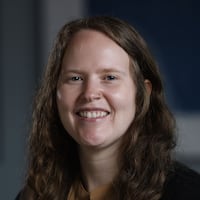For white students, being taught by teachers who don’t look like them can show different perspectives and expose them to someone different from themselves.
Springfield City School District’s Human Resources team explained that a teacher from a different background than a student can bring world and cultural experiences that reflect a more diverse background for students to learn from.
“Teachers from different backgrounds can dispel stereotypes and biases formed and perpetuated in monolithic communities,” said Devon Berry, human resources director for West Carrollton and a former teacher. “Diverse teachers bring first-hand knowledge to students that better prepare them for an ever-increasing pluralistic society.”
This is why for teachers’ unions, education colleges and school districts, recruiting and retaining a diverse group of teachers, in particular Black men, has become increasingly important. But success has been limited.
About 91% of teachers in Ohio are white, according to the Ohio Department of Education. About 4% of teachers are Black, and less than 1% of teachers identified as either Asian-American, Native American, Native Hawaiian or Pacific Islander or Hispanic, while about 3% of teachers identified as more than one race or declined to answer.
By comparison, about 68% of Ohio’s students are white, while 17% are Black, about 7% are Hispanic, about 6% are multiracial, about 3% are Asian-American and less than 1% are Native American, according to ODE.
The population in Dayton and Springfield are quite diverse, according to Lillian Drakeford, interim dean at the College of Education at Central State University, the state’s historically Black, public university.
“So it would make sense that in schools, we would want to encourage everyone to embrace the values of diversity, equity and inclusion so everyone feels an integral, welcomed part of the education process,” Drakeford said.
Increasingly, suburban districts, urban districts and rural districts are interested in recruiting candidates who are diverse in race, gender, sexuality and experience.
“We absolutely welcome applicants of all races, ethnicities and backgrounds to apply for jobs within our district so that our staff diversity is reflective of our expansive and diverse student population,” said Jenna Leinasars, communications specialist for the Springfield City School District. “Our One Wildcat Family is made up of many different hues and shades, but we have always considered that to be among our greatest strengths.”
In the Springfield school district, 21 African American administrators serve in positions including building principals, assistant principals, attendance officers or other roles within departments such as Student Services and Community Initiatives. The district has 37 African American employees in certified positions, including teachers, counselors, instructional coaches and intervention specialists, plus 71 African American employees in classified positions, including bus drivers, bus aides, kitchen aides, custodians, paraprofessionals, security aides, secretaries and those in the technology department.
A diversity problem
Experts say having a diverse group of teachers brings different perspectives to the education world, reflects students’ experiences better and can expose students to new ideas.
“It’s interesting that we remain in a profession that doesn’t reflect the population that it serves and inherently ingrained in that is a disconnect,” said Rochonda Nenonene, an education professor at the University of Dayton whose work, along with fellow education professor Novea McIntosh, centers around training new teachers to be culturally responsive.
Nenonene noted there is research showing that white teachers can view Black students from a deficit perspective. While she stressed not all white teachers do that, it is important, she said, to train all young teachers to understand cultural differences and respond to them, while simultaneously increasing the number of teachers entering the profession who are not white.
“Even if it’s unintentional, bias is still bias; even if it’s an unintentional microaggression, it is still a microaggression,” she said.
That can have long-term academic impacts on the student, she said, as those students may miss out on opportunities because the teacher just isn’t offering them to certain students.
McIntosh said more diverse teachers can bring more than just a diverse face to the classroom. They can bring their own set of experiences and feelings, which can help them connect to students.
“They bring the diverse family histories, orientation, experiences of students in the classroom, and these are attributes that we do not find in textbooks, for you know, they’re omitted from a lot of textbooks,” McIntosh said.
In Clark County, about 94% of teachers are white, including 71% female and 23% male, while only 2.5% are Black, including 1.7% female and less than 1% male, according to ODE. Less than 1% of teachers identified as Hispanic, Asian, Multiracial, American Indian or Alaskan Native, while 1.2% are not specified.
Diversifying in college
Getting a more diverse teaching workforce is complicated. Multiple institutions of higher education, including the University of Dayton, Wright State University, Sinclair Community College, Central State University and Miami University are working together to help diversify the teaching profession by recruiting people into the profession young, in high school and middle school.
Drakeford said Central State’s online education program could also help recruit more teachers of color, and CSU is working with several area schools, including Dayton Public Schools and Trotwood-Madison, to develop pipelines for students in high school and middle school to consider teaching as a profession and take classes in high school to prepare.
Teachers’ unions, including the Ohio Education Association and the Ohio Federation of Teachers, have prioritized recruiting more people of color into the profession.
Melissa Cropper, president of the OFT, said a program through the OFT in Cleveland is focused on recruiting more Black men into the teaching profession, mostly pulling on the existing groups of paraprofessionals – school staff with an associate’s degree in education – to complete a bachelor’s degree in teaching.
Scott DiMauro, the president of the OEA, said programs that recruit based on paraprofessionals can be helpful because paraprofessionals often come from the same neighborhoods as the students do.
“That kind of personal connection that exists between the educator and the students is invaluable when it comes to really helping students succeed because students are going to thrive academically when they know their teachers really care about them and are invested in their success,” DiMauro said.
District solutions
An effort launched last year from West Carrollton and Oakwood’s public school districts pools resources with school districts in the region to recruit and retain teachers, including help mentoring teachers of color from teachers in other districts.
The Diversity Recruitment Educators Association for Miami Valley, or D.R.E.A.M, is a $70,000 per year, three-year effort. Allyson Couch, Oakwood’s interim superintendent and one of the people leading the initiative, said this is the third year of the project and more than 22 school districts have joined, including Springfield and Northeastern Local Schools.
Springfield’s Human Resources team said the district is helping to mentor young teachers and get them into the education world “by partnering with local universities, membership in the D.R.E.A.M., and providing pathways for classified support personnel to enter the teaching profession.”
Multiple districts across the area have also started mentoring programs, using their existing teachers to work with new teachers still in college. Across the board, education professionals said mentoring is a key part of keeping young teachers in the profession.
McIntosh said those relationships can be key to building long-term success for teachers, as well as building a network of other teachers.
“Having a community, a collaborative community, where you can support each other and dialogue, share ideas, exchange, your experiences and get a space for healing... that’s vital to not only recruiting these teachers but also sustaining them within the profession,” McIntosh said.



